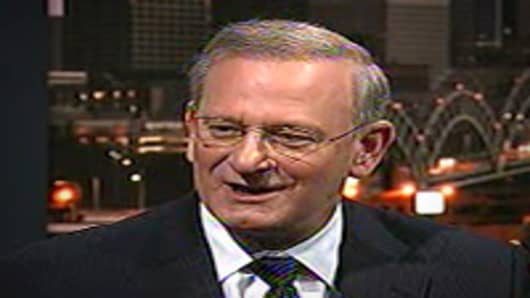The president of the Kansas City Federal Reserve told CNBC he sees a 20 percent chance of a recession.
Speaking from the annual Jackson Hole, Wyo., meeting hosted by the Kansas City Fed, Thomas Hoenig admitted the 20 percent figure is "a fairly high number."
"I have always said we would have modest growth. It's going to take time...it's not going to be straight up," Hoenig said. "We have a long path ahead of us, a long struggle to rebuild confidence in our economy, to rebuild our economy. But I am confident we can do that if we look a little further down the road and choose policies that are more long-term focused."
He also sees American business talking itself into a lack of confidence. The wrangling over the debt ceiling didn't help because it showed Washington doesn't have a clear direction about the economy either, he said.
Confidence "does matter," he added, because "you talk yourself into holding back. Businesses are saying, 'Hmmm, I don’t know, my business is pretty good…but I hear things are slowing so I’m going to pull back, I’m not going to make that capital expenditure.' So it can have an element of a self-fullfiling prophecy, and that worries me a little."
Hoenig, who disagreed with both versions of quantitative easing , was not in favor of the Fed's recent pledge to keep interest rates low through the middle of 2013.
"I didn’t like the extended period language to begin with so I can’t say I'm enamored of this at all," Hoenig said. "I don’t think you can give guarantees to some parts of the market and not to others. It encourages speculation. People have to make calculated judgments based on events. That forces markets to run more efficiently."
In his district, he said, "when I see land that goes from $6,000 to $12,000 an acre...that’s a speculative bubble."
Correction: An earlier version of this report incorrectly said Hoenig was one of three dissenters at the last Fed meeting. He did not vote. It also had the wrong time period for the Fed's decision to keep interest rates low.


